The Re-Engagement Project [Project Approach]
![The Re-Engagement Project [Project Approach]](/content/images/size/w960/2021/10/re-engagement-1.jpeg)
The Re-Engagement Project is a cultural innovation project. I got the idea of Re-Engagement in March 2020. On Dec 26, 2020, I considered it an example of Project-oriented Activity Theory. The theory is a radical version of Activity Theory. It redefines the unit of activity as a Project which refers to the process of formation of a concept.
From the perspective of Project-oriented Activity Theory, the social process of developing a new concept is a project. If we consider Re-Engagement as a new concept that could bring some value to the world, then we should work together on the Re-Engagement project.
The idea of Re-Engagement is not new. We all have experiences of remembering someone, someday, someplace. On March 1, 2017, my son wore mismatched socks in order to celebrate Dr. Seuss’ birthday. However, I want to use the concept of Re-Engagement to highlight the creative potential between personal memory such as my son’s birthday, and collective memory such as Dr. Seuss’ birthday.
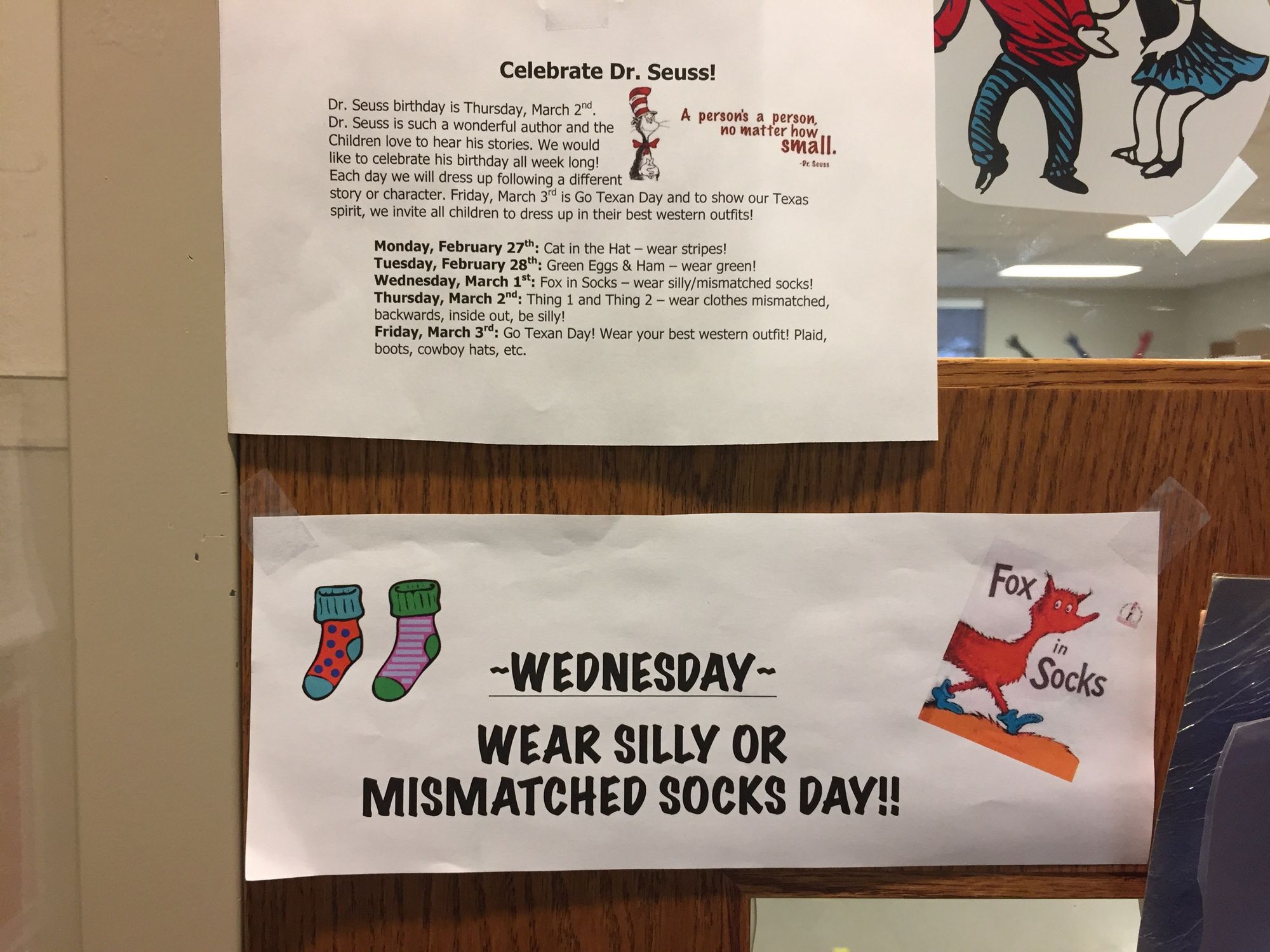
Once upon a great experience. No matter how big or small the experience is, we could re-engage with it.
In early March 2020, SXSW, a 34-year annual tech, music, and film festival held in downtown Austin, was canceled due to the coronavirus outbreak. The SXSW 2020 was scheduled to take place from March 13th to March 22nd, Austin Mayor Steve Adler announced the cancellation of the festival on Mar 6, just one week before it.
This inspired me to propose an alternative category of an event called Re-Engagement.
- When offline events are canceled around the world, the obvious Plan B is running online real-time conferences and virtual meetings with conferencing software such as Zoom, Google Hangouts and Jitsi.
- I think we can go further and I consider Re-Engagement as Plan C.
In order to describe my proposal, I created the following Re-Engagement framework with the WXMY diagram.
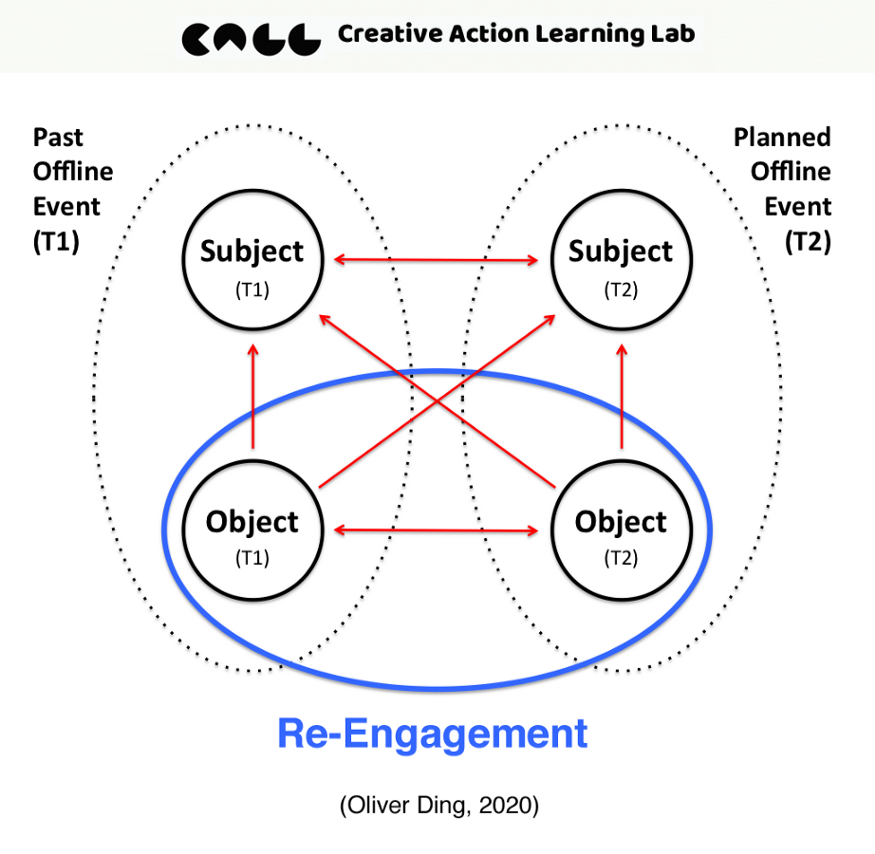
The framework was created with three ideas: the diachrony of community, the Subject-Object activity, and the WXMY diagram.
The Diachrony of Community
The first idea is the diachrony of community. I borrowed the term diachrony from Saussure’s theory of linguistics. For Saussure, it means the development and evolution of a language through history. I applied the idea to the practice of community building. While the real-time face-to-face offline event focuses on the synchrony of community, the Re-Engagement is designed about the diachrony of community. For offline events, there are past events (T1) and planned events (T2), the Re-Engagement connects T1 and T2 together.
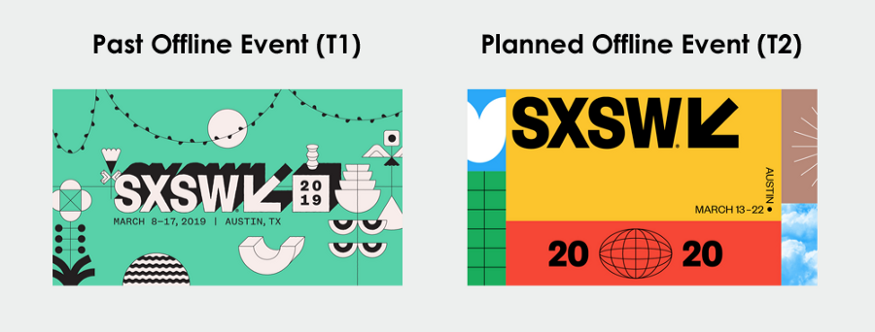
The Subject-Object Activity
The second idea is the notion of Subject-Object. I learned the idea from Activity Theory. In traditional Activity Theory, the relationship between Subject (human actor) and Object (the objective) forms the core of activity. The Object leads to Outcomes. For offline events, the Subject is event curators, speakers, and attendees while the Object is various themes for discussion and potential collaboration opportunities. The Outcomes are new insights inspired by discussions and new collaborations emerging from the socialized events.
The WXMY Diagram
The third idea is the WXMY diagram. By combining the diachrony of community and Subject-Object together and placing them within the WXMY diagram, I realized that Container Z can transform into a new category: Re-Engagement.
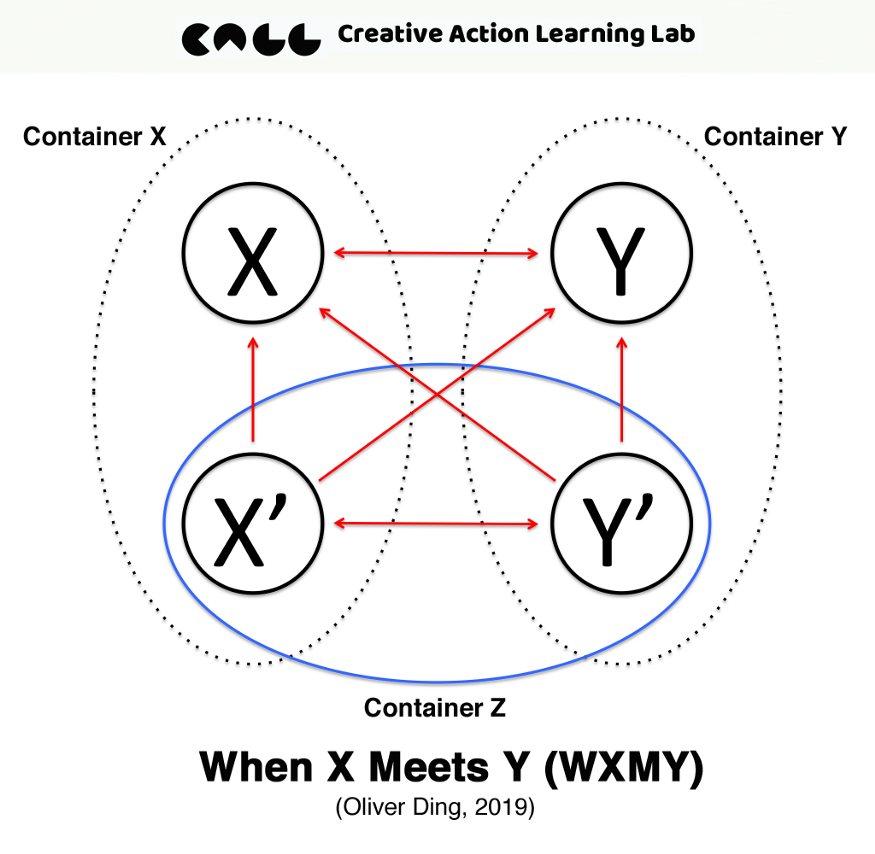
The above diagram is the WXMY diagram. You can find more details about the diagram here.
Re-engagement as “Form of Events”
I got the idea of Re-Engagement on March 7, 2020, and developed the Re-Engagement framework on March 18, 2020.
If we adopt Blunden’s Project-oriented Activity Theory, we could consider these actions as phase 1: Initialization. I developed a new concept “Re-Engagement” to help event curators to solve the problem of digital transformation of event experience.
While other people just directly move to online events such as Zoom meetings (at concrete level) from offline events such as conferences (at concrete level), I jump from the offline events such as conferences (at concrete level) to “form of events” (at an abstract level).
Re-engagement as “Content of Events”
The next step is returning from the abstract level (forms of events) to the concrete level (the content of events). I designed several subforms of events for the concept “Re-Engagement”. See the picture below:
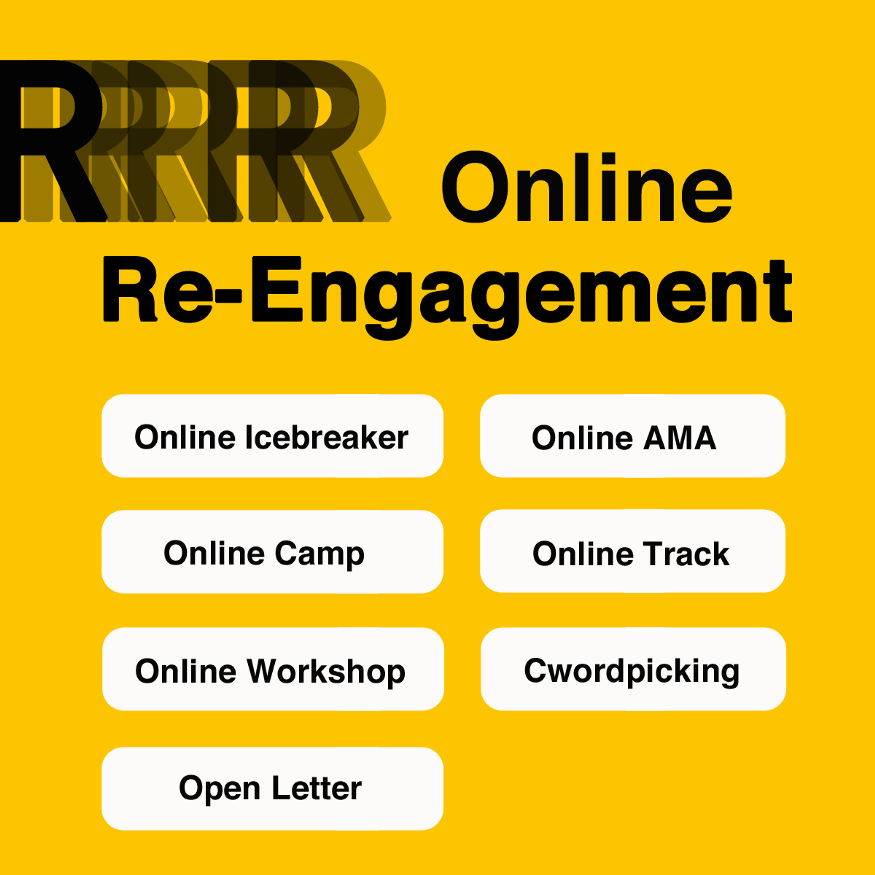
I also applied these ideas to the SXSW case and designed a mini website as a demo of the concept. Since I was a member of the team of Doowit which is a new platform for curating challenge-based activities, I used the Doowit platform to build a Doowit channel to represent my ideas. The screenshot below is the homepage of the channel.

Re-engagement as A “From of Activity”
Since then, I have been working on collecting cases in order to design innovative sub-formats of the concept. For instance, I found the concept of “Re-Engagement” can be applied to the academic field after reading the 2019 book Perception as Information Detection: Reflections on Gibson’s Ecological Approach to Visual Perception.
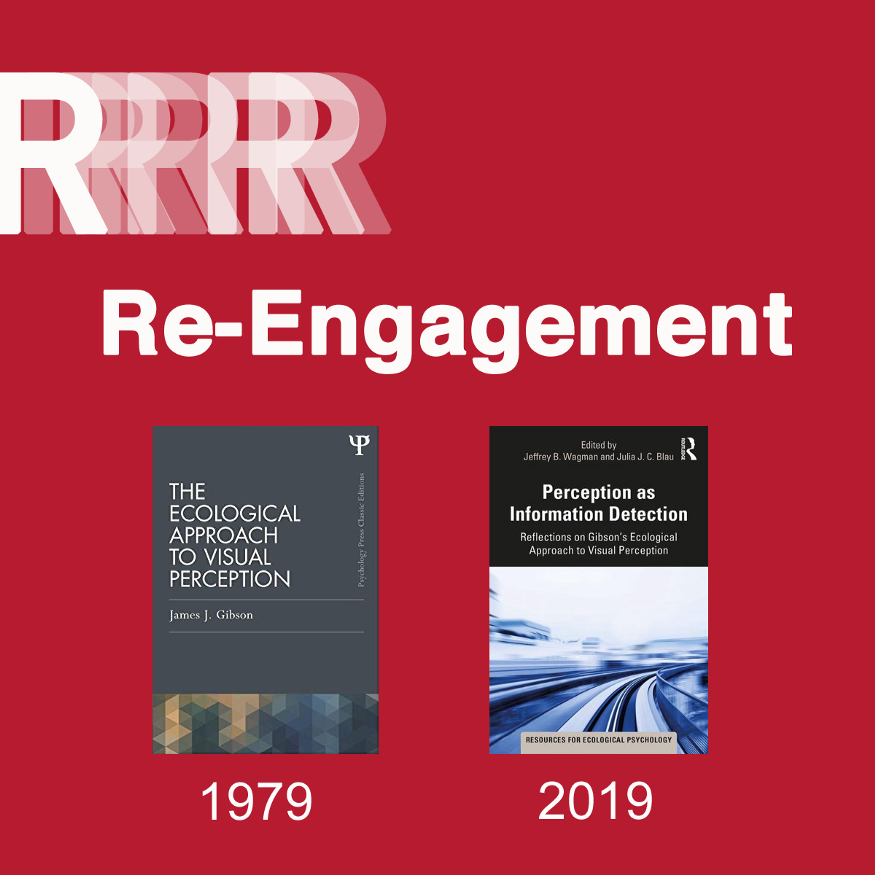
Ecological psychologist James J. Gibson published his landmark volume The Ecological Approach to Visual Perception in 1979. The 2019 book is authored by 16 ecological psychologists with a special form that provides a chapter-by-chapter update to and reflection on the 16 chapters in Gibson’s original volume.
This is an amazing Re-Engagement!
Inspired by this book, I realized that the concept of “Re-Engagement” is not only for planning online events and face-to-face meetings but for planning activities with a special theme. In order words, the concept of “Re-Engagement” refers to a new form of activity.
From the perspective of Project-oriented Activity Theory, this is the beginning of Objectification which is phase 2 of the formation of a concept. According to Andy Blunden, “A concept, like a project, is a larger (molar) unit, which is implicit in each meaningful action, disclosing its motivation. The project inheres in the artifact-mediated actions, norms, rules, and symbols flowing from the project’s self-concept and underlying the actions which constitute the project.”(2014, p.9)
Re-engagement as Cultural Innovation
For Project-oriented Activity Theory, a brand new concept means a small social movement that inspires cultural innovation. However, the process is not individual creation, but collective collaboration.
For example, I wrote an article about Twitter on Jun 19, 2020. I adopted the term Twittervill from Shel Israel’s 2009 book Twitterville: How Businesses Can Thrive in the New Global Neighborhoods. This is individual action. However, if you are a writer, you can do the same thing!
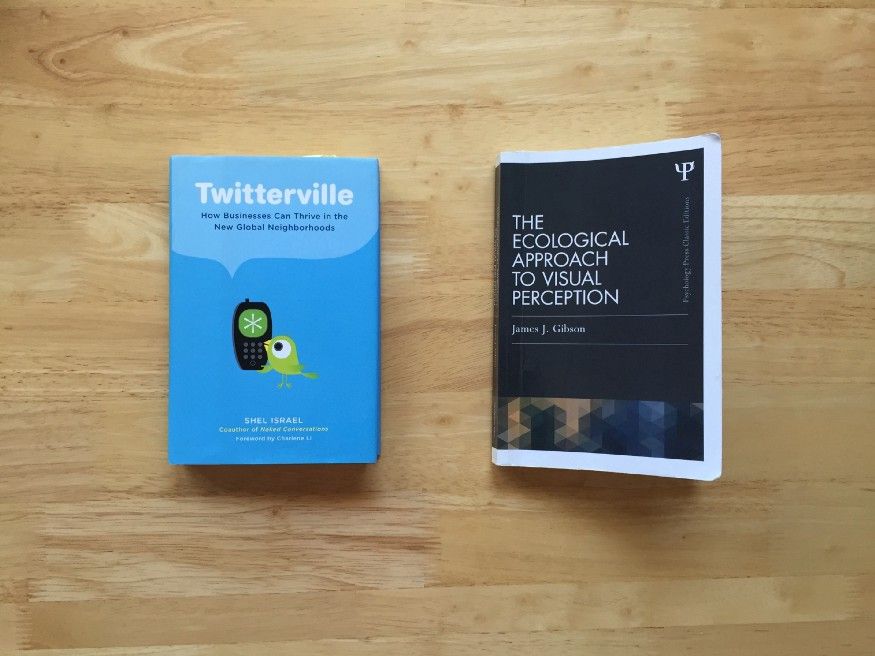
I recently attended an online workshop titled BACK TO W.E.C. which is a 2-month program. W.E.C. stands for the Whole Earth Catalog which is a counterculture magazine and product catalog published by Stewart Brand several times a year between 1968 and 1972.
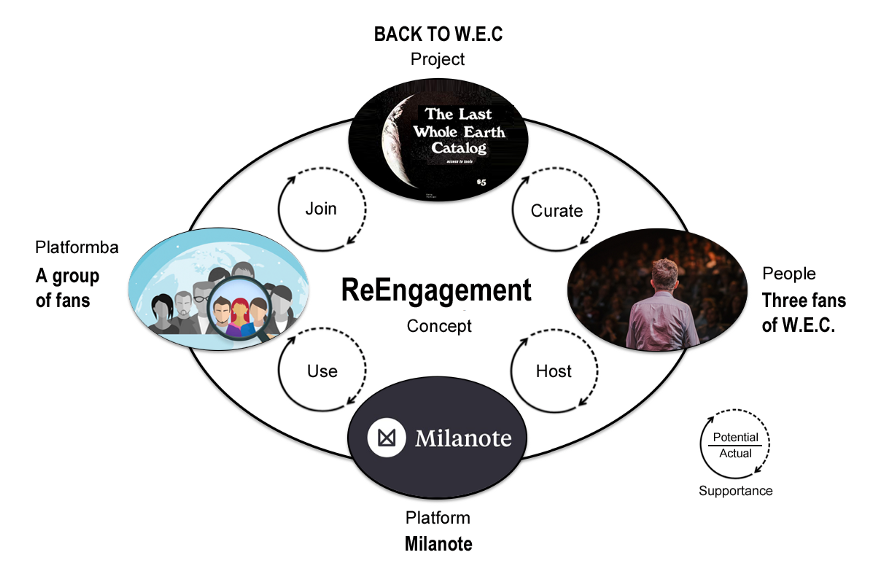
The BACK TO W.E.C. project uses Milanote which is a virtual whiteboard to share ideas and organize discussions. As a 2-month program, the curators also host real-time meetings each week. Each time the group focuses on one chapter of W.E.C.
Forming a concept is a collaborative project. I’d like to share the concept of Re-engagement with you and others. Together, we can remember great people, great books, great events, great things, etc. Together, we can learn from our past, improve our present, and create a future.
